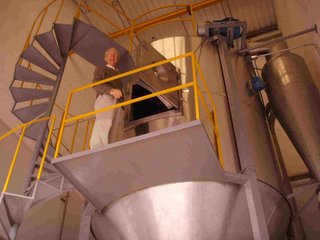
spray dryer dr 15
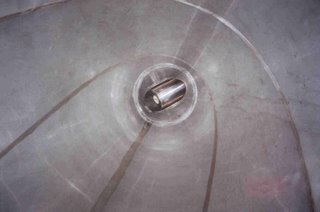
spray dryer cone
Production Spray Process produces spray dryer, spray cooler, , spray closed cycle, falling film evaporator, centrifugal decanters, powder pneumatic carriers, coolers, carriers with endless screw and all auxiliary equipment for spray dryers operations.Dryers can be made in suitable measures for each customer. Furthermore, Spray process installs complete projects for any required specification.
APPLICATIONS OF SPRAY DRYING PRODUCT LIST:Products listed below are suitable for suspended particle processing in systemInvolving atomization. The majority of product listed represent successful spray-drying Operations, but products involved in Spray cooling, and spray concentration are also included.
CHEMICAL INDUSTRY:
Plastics, resinsAB and ABS latexMelamine formaldehyde resinPhenol formaldehyde resinPolyacrylate-em ulsion-typePolyacrylonitrilePolycarbonatePolyethylenePolyvinyl acetatePolyvinyl butyratePolyvinyl chloride emulsion typePolyvinyl chloride suspension typePolyvinyl pyrrolidonePolyvinyl tolueneRubber latexSBR latexUrea formaldehyde resin
CERAMIC MATERIAL:
Aluminium oxideBeryllium oxideCarbidesCarborundumElectro-porcelainEnalmesFloor tile materialFerriteGrinding whell materialGlass powderInsulator materialJron oxideKaolinSilicon dioxideSpark plug materialSteatiteSitanatesTungsten carbideUranium oxideWall tile materialZirconium silicate
DETERGENTS and SURFACEACTIVE AGENTS:
Alkyl-aryt sulphonatesDetergent enzymesDispersing agentsEmulsifying agentsFatty alcohol sulphateHeavy-duty detergentsLight-duty detergents Mono-and dipotassium orthophosphateMono-and disodium orthophosphateNitrilo tri-acetic acid saltsOptical brightenerPhosphatesSaponineSodium lauryl sulphateTetra potassium polyphosphate
PESTICIDES:
Calcium arsenateCooper oxychlorideCuprous oxide2.4 DBA sodium salt2,4.6 TBA sodium saltDDT with filler2.4 dichloro-phenoxyacetic acidMono-methylamine saltDichloro- phenoxypropionic acidDichloro-propionic acid sodiumDimethyl-dipyridyl dichlorideLead arsenateMa n 9 a no-et h yl ene- bis-d it h I oca rbam ateMethyl-chloro- phenoxyacetic acidMenthyl-chloro- phenoxypropionic acidMenthyl-chloro-phenoxybutyric acidSodium saltSodium aluminium fluorideSodium-fluorideSodium methyl arsenateSodium penta-chlorophenolateSulphur colloidalZi nc-et hy I en e- bi s-d ith I oca rbam ateZine diethyl dithiocarbamateZinc dimethyl dithiocarbamate
DYESTUFFS, PIGMENTS:
Basic dyesCeramic coloursChrome-yellowCopper oxideCosmetic coloursDyestuff intermediateFormu lated dyestuffsFood coloursIndigo dyeIn k pigmentsInorganic pigmentsIron oxideKaolimLithoponeMilore blueOrganic pigmentsPaint pigmentsPapers coloursPlastic pigmentsSoluble ande microdisperse textile dyesTitanium dioxideWater coloursZinc chromateZinc potassium chromateZinc tetroxychromate
FERTILIZE:
Nitrogen fertilizersAmmonium saltsUreaPhosphoric acid fertilizersSuperphosphatesPotash fertilizersSewage sludgeTwo component fertilizers (N-P,N-K,P-K)Three component fertilizers (N-P-K)
MINERAL FLOTATIONCONCENTRATES:
Cooper oreCryoliteIron oreLead oreManganese oreMolybdenum oreNickel oreSilver oreTungsten ore
INORGANIC CHEMICALS:
Abrasive gritsAluminium (metallic)Aluminium chlorideAluminium hydroxideAluminium oxideAluminium phosphatesAluminium silicateAluminium sulphateAmmonium chlorideAmmonium molybdateAmmonium nitrateAmmonium phosphateAmmonium sulphateAntimony sulphideArsenic oxideBarium carbonateBarium chlorideBarium HydroxideBarium sulphateBarium titanateBauxite waste liquorBentoniteBeryllium dioxideBismuth aluminateBismuth carbonateBoraxBoric acidBoron phosphateCalcium carbonateCalcium d 1 lorideCalcium hydroxideCalcium d 1 romateCalcium hypochloriteCalcium nitrateCalcium phosphateCalcium silicatesCalcium sulphateCatalystsCementeChorme-iron oxideChromium sulphateCopper chlorideCopper oxideCopper oxychlorideCopper sulphateCopper sulphideCupric oxideCryoliteFeldsparFerric sulphateFerrous sulphateGraphiteGypsumKaolinLead zirconateLime slurryLithoponeLithium chlorideMagnesium aluminium silicateMagnesium carbonateMagnesium chlorideMagnesium hydroxideMagnesium oxideMagnesium phosphatesMagnesium sulphateMagnesium trisilicateMagnesium uranateManganese carbonateManganese chlorideManganese oxideManganese sulphateMolybdenum disulphideNickel carbonateNickel sulphidePotassium acetatePotassium bid 1 romatePotassium carbonatePotassium chloridePotassium chromatePotassium fluoridePotassium metaphosphatePotassium permanganatePotassium phosphatePotassium silicatePowdered metalsSilica gelSilicon dioxideSilicon carbideSodium aluminateSodium aluminium sulphateSodium arsenateSodium bicarbonateSodium bid 1 romateSodium bisuphate and sodium sulphateSodium bisulphideSodium borateSodium carbonateSodium d 1 lorideSodium hypode 1 loriteSodium fluorideSodium formateSodium hydroxideSodium perborateSodium phosphateSodium silicateSodium silicon fluorideSodium sulphateSodium thiosuphateThorium carbonateThorium nitrateTitanium dioxideTitanium tetrachlorideTungsten carbidePotassium nitrateUranium dioxideZinc arsenateZinc carbonateZinc chlorideZinc sulphateZirconates
ORGANIC CHEMICAL:
Aluminium stearate or triformateAmino-naphthol-sulphonic acid para-Aminosacvlic acidAmino acidAscorbic acidAmmonium di-nitro-ortho cresolBarbituric acid derivateBarium ricinoleateCalcium acetateCalcium butyrateCalcium gluconateCalcium caseinateCalcium lactateCalcium propionateCalcium saccharatesCalcium stearateCarboxymethyl celluloseChloramineChlorohexidine gluconateChloromycetine succinate-calcium saltChlorophyllCholine saltsCitric acidDicyandiamideDicydohexylphthalateDiethyldiphenylurea2,4-dichlorophenoxy-acetic acid sodiumDodecylbenzenesulphonate sodium saltEDTA saltGlutamic acidGlyoxalLactoseLysineMaleic acidMethyl acrylic acidMethyl arsenic acid-disodium sulphateMono-carbonic acidMono-ethanol aminosuphateMonochloroacetic acid sodium saltOxalic acidPara-Nitro phenolPantholtenatesPerfumesPotassium acetaldehyde sulphoxylatePotassium acetatePotassium isopropylxanthogenatePotassium phthalatePotassium bicarbonatePotassium sorbateQuinoline sulphonateSodium acetateSodium benzene sulphonateSodium benzoateSodium di-oxalateSodium dimethyl dithiocarbamateSodium monochloroacetateSodium salicylateStearic acidTartaricacidThiocarbamatesThionineUreaWaxesXanthatesZinc stearate
FOOD INDUSTRY:
Milk produdsBaby foodyButter (high fat produds)ButtermilkCaseinCaseinatesChesseCocoamilk with sugarCoffee whitenerCreamFat-fjlled milkFat-fjlled wheyHidrolysed milk productsIce cream mixMalted milkMilk replacerMixed milk productsSkim milkWheyWhey mother liquorWhey permeateWhey proteinWhole milk
EGG PRODUCTS:
Egg whiteEgg yolkWhole egg
FOOD PRODUCTS AND PLANT EXTRACT:
Artichoke extractsBeef brothBouillonCake mixesCamomile teaCereals, pre-cookedChicken brothChlorophyllCocoa mixturesCoffee-extractsCoffee-substitute extractDecaffeinated coffee extractFat flour mixturesFish proteinsFlavouringsFood colouringGarlicHip-extractLactoseLiquorice extractMalt extractMeat pureeMilk-coffee mixturePimentoPlant proteinProtein HydorlysateRennetSoup mixesTea extractWhiteners (coffeetea)
FRUIT VEGETABLES:
ApricotsAsparagusBananaBeansBeetrootCarrotCitrus fruits with fillerMangoesOnionPeachesSoft fruitsTomato
CARBOHYFRATES AND SIMILAR PRODUCTS:
Baking compoundsCorn steep liquorCorn syrupGlucoseGum ArabicMaize glutenPectinSorbitol sorboseStard 1 esSugar / gelatin mixturesSweetenersTotal sugarWheatflourWheat glutenWort
BIOCHEMICAL INDUSTRY:
Phannaceutical productsAntibiotics and mouldsBacitracinPenicilinStreptomycinSulphatiazole (selected)EnzymesHonnonesLysinePhannaceutical gumsSeraSporesTabletting constituentsVaccinesVitamins
YEAST PRODUCTS:
Brewers yeastFodder yeastSingle-cell protein (SCP)Yeast extractYeast hydrolysates
INDUSTRIES UTILIZING CHEMICALS FROM TIMBER:
Tanninsil Tannins from barkMimosa extradOak extradTannins from woodQuebracho extradChestnut extradTannins from fruitsDividivi extradMyrobalan extradTannins (synthetic)
CELLULOSE:Sulphite waste liquorLignosulphonates
OFFAL AND FISH INDUSTRIES:
Slaughterhouse produdsAnimal proteinBloodBone glueExcretaGelatinGlandsTissuesFISH
PRODUCTS:
Fish flour, meal, pulp, hidrolFish stickwater (solubles)Whale stickater stickwater







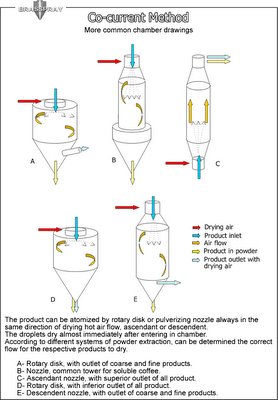

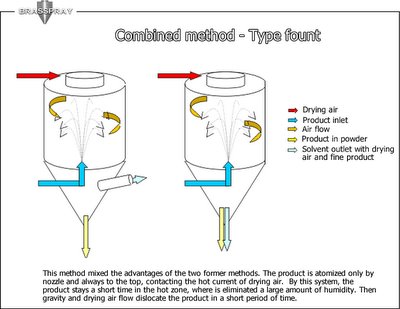









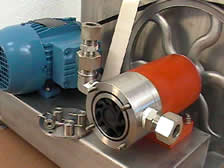
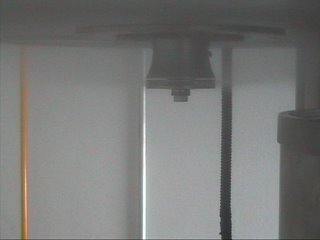
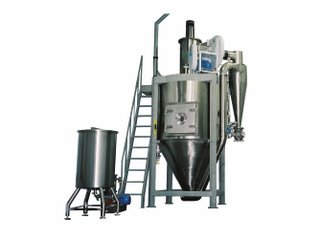
 spray dryer dr 15
spray dryer dr 15